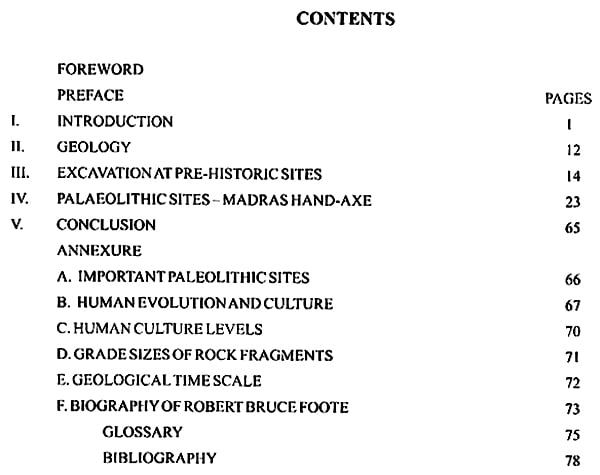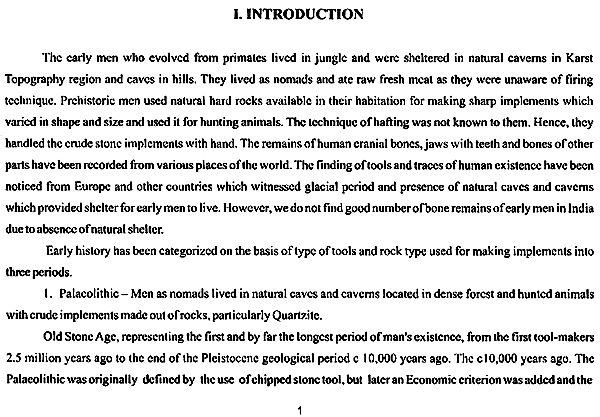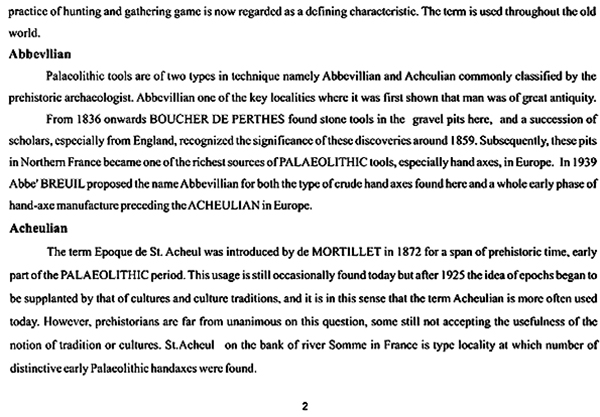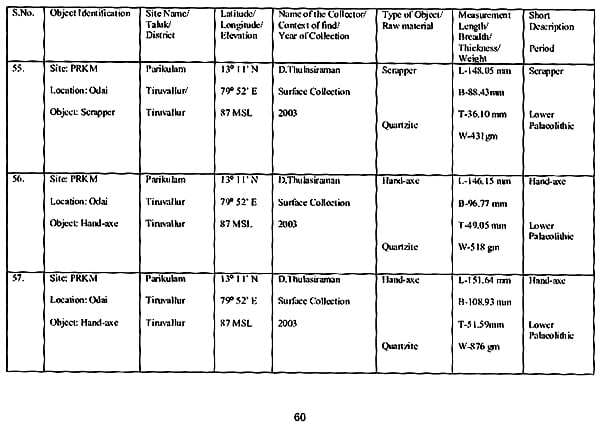
Peeping the Past- Through Palaeolithic Tools (An Introduction)
Book Specification
| Item Code: | NAW849 |
| Author: | S Vasanthi |
| Publisher: | Tamil Nadu Government |
| Language: | English |
| Edition: | 2012 |
| Pages: | 78 |
| Cover: | PAPERBACK |
| Other Details | 6.00 X 8.50 inch |
| Weight | 190 gm |
Book Description
The Prehistoric sites mostly of Paleolithic period are found concentrated in Sohan Valley of Siwalik Hills, Northern India and Allikuli Hills, Tiruvallur District in Tamil Nadu. Stone implements worked by the early men at Sohan Valley of Shiwalik Hills, Northern India are Abbevillian in technique while implements from Poondi reservoir (Allikuli Hills) are Acheulian in technique. Since tools are found in large quantity in Sohan Valley, the tools assemblages is called ‘Sohan Valley Industry’. Likewise, implements from Poondi are known as ‘Madras Hand-Axe’ as the sites are close to madras (now Chennai). On account of yielding of good number of stone tools found, tools assemblage site is called ‘Madras Hand-Axe Industry’. The pioneer work by R.B. Foote, British Geologist who found the first tool at Pallavaram near Madras (Chennai) in the year 1863 had led to the discovery of Paleolithic sites around Poondi, Tiruvallur District, Subsequently, Indian scholars have also worked on that and found many sites and collected Paleolithic implements in this region.
Apart from exploration, excavation conducted by the Archaeological Survey of India and Tamil Nadu State Department of Archaeology has thrown light on the environmental changes that occurred in the geological past in this area and yielded invaluable implements from various chronological levels. Recently, in the year 2005-06, the State Department of Archaeology excavated the site at Parikulam and unearthed a number of Paleolithic tools such as Scrapper, Hammer, Ovoid, Discoid, etc., confirming the richness of the area. An exhibition was held subsequently and the finding have been published in the book released in 2007.
India is having a rich cultural heritage, It is the duty of every citizen to protect and conserve and leave the heritage properties for the future generation. India’s long history left our many heritage and cultural impacts by way of architectural, heritage properties. In the Constitution of India it is defined in Article 51 A as the Fundamental Duties IV A, that ‘every Indian citizen should, uphold the constitutional duty, should value and preserve the rich heritage of our composite culture and protect and improve the natural environment including forests, lakes, rivers, wild life and to have compassion for living creatures. The Directive Principles of the State Policy, Part IV of the Indian Constitution also states that, "it shall be the obligation of the state lo protect every monument or place or object of artistic or historic interest declared by law to be of national importance from spoliation, disfigurement destruction, removal, disposal or export as the case may be," it is felt that it is the duty of every citizen to preserve the cultural and natural properties.
Having this in mind instead of class room reading, the students can visit historical buildings, a national park, a museum or a traditional performing artist. This will enhances the student's learning experience, observation skills and encourage a sense of appreciation of our diverse cultural legacy.
**Contents and Sample Pages**











